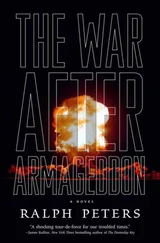The men hesitated, then did as they were ordered.
“Get control of yourselves,” Scott shouted.
He shouldered the frightened engineers aside. One look at the console’s gauges and instruments confirmed that the APD reading had increased rapidly, that a ten gallon-a-minute leak had erupted somewhere in the reactor’s main coolant loop. The reactor should have SCRAMMED—shut down automatically—but hadn’t. If the reactor wasn’t shut down and the leak repaired quickly, or if the coolant makeup system couldn't provide enough water, the reactor core would run dry and overheat with catastrophic results. The K-480 was suddenly a potential Chernobyl II.
“Why didn't the reactor SCRAM?” Scott bellowed over the hammering alarm.
“I don’t know,” said the boyish-looking chief engineer. “The quench plates didn't drop like they’re supposed to. I–I’ve never seen anything like this before.”
Scott knew that Russian naval reactors, like U.S. naval reactors, used hafnium plates or rods to control the reactor’s power output. When the plates retracted, nuclear fission accelerated, producing heat and power. Conversely, plate insertion slowed or “quenched” the reaction by absorbing the neutrons produced during fission.
The acronym SCRAM, for Safety Control Rod Axe Man, had evolved in the early days of reactor development during World War II. Then, a single control rod simply hung from a rope over the reactor.
In an emergency a man wielding an axe would cut the rope, allowing the control rod to drop into the reactor and shut it down. Now the procedure was more complicated.
Scott pointed to a pair of winking red warning lights on the inclined, waist-high section of the console. “The quench plates are still in their retracted position. The autorelease mechanism must have failed— like everything else on this ship—and shut that damn alarm off. The Norwegians are probably deaf from it by now too.”
The chief engineer located and threw the switch. The sudden silence was almost overwhelming.
“Jake, core temperature is rising fast,” Alex said, pointing to the large, centrally located temperature gauge set into the control panel with its switch gear and elaborate red and blue diagram of the reactor’s piping system. Some branches of the diagram were flagged with yellow and black labels marked Apasnost! — Danger!
“Chief, initiate a manual drop,” Scott ordered. “And somebody find Botkin! Tell him to get his ass in here!”
“I already tried a manual drop,” said the chief. “It didn’t work.”
“Well, try it again.”
A hand wheel protruding from the center of the console controlled the insertion rate of the plates into the reactor core. The chief twisted the wheel to its stop but the plates refused to release and drop.
“I don’t understand: They should have dropped,” the chief said, a hand to his sweat-matted hair. “If they don't, the reactor will overheat and melt through the bottom of the ship.”
* * *
“Play it back again,” said Captain Bayer.
Bayer, Dass, and the sonar watch officer, Garborg, listened to the high-pitched sound that had been processed by the towed array and recorded on the VDS system’s computer.
Garborg pointed to a green sine wave displayed for analysis on a monitor. “Sir, note the regularity of the wave’s peaks. Strictly mechanical—that is, it’s definitely a man-made sound.”
“Any idea what it is?” Bayer said.
“A signal,” said Dass.
“Indeed, but what kind of signal?”
“An underwater distress signal?”
Bayer seemed to dismiss this possibility by remaining silent. Then, after considering at length, he said, “Yes, a distress signal from a submarine. A Russian submarine.”
Dass and Garborg said nothing.
“Narvik reported hearing it too,” Bayer said. “Duration?”
Garborg consulted notes. “Five minutes, eight seconds. Range estimate was ten kilometers.”
“Can we get an accurate fix on the source by using Narvik’s and our own computed bearing?”
“We can try, sir,” Garborg said. He stepped away to work on it.
“What do you think, Mr. Dass? A distress signal? Or what?”
“Or an alarm.”
Bayer put a finger to his chin. “A casualty alarm. A casualty serious enough to not only set off an alarm aboard a submarine but perhaps slow her down or even worse.”
“Something that would force her to surface and identify herself.”
“Exactly. Let’s sec what Mr. Garborg comes up with. Maybe we can force the issue.”
“Jake, my God, look at the core temperature,” Alex said. The temperature gauge needle had crept out of the Normal range.
Botkin burst into the reactor control compartment with a wild, terrified look on his face. “The warning signals—a radiation leak—”
“A coolant leak,” Scott corrected Botkin. He saw Abakov ease into the compartment behind Botkin. “Calm down.”
Botkin, pointing at the temperature gauge, threw himself at the control console. The gauge’s black needle wiggled at the edge of the red zone. “The fuel will melt!” he cried. “We have to surface right now!” Botkin grabbed an SC1 microphone. “We have to emergency blow—”
Scott tore the mike from Botkin’s fist. “Belay that!”
“We’re all going to die—”
Scott grabbed two handfuls of Botkin’s coveralls and threw him against the console. “No one’s going to die!”
He understood what Botkin feared, what every nuclear sub sailor feared: a core meltdown. To prevent it, someone would have to enter the reactor compartment with the reactor critical and in danger of melt down and manually drop the quench plates.
“Chief, break out your schematics of the cooling system,” Scott commanded.
The engineer threw open a locker and pawed through a pile of disorganized ring-bound manuals and folded plans. He found the one Scott wanted and flattened it out on the console.
As Scott and the two engineers conferred, Abakov said to Alex, “What are we facing?”
“If the reactor core melts down, Scandinavia and eastern Europe could face a second Chernobyl,” Alex said. “The radioactivity released could contaminate a wide swath of Russia too.”
Botkin heard this and wailed, “But this is a disaster.”
Alex said, “At Chernobyl the reactor overheated and caused a core meltdown. Two hydrogen explosions blew the top off the reactor building, releasing deadly radioactive material into the atmosphere. Not only did it expose people in Russia to high levels of radioactivity, the radioactivity spread over northern Europe. Millions were affected.”
“I remember,” Abakov said. “People got sick and there were birth defects….”
“Radiation damages human cells and the central nervous system. It also causes cancer and genetic defects. High doses can cause death within days or even hours of exposure. The long-term effects of lower doses are just as bad. That’s why we wear dosimeters to record exposure. No dose is harmless and repeated exposures build up in the body and can have delayed effects.”
“How do these reactors work, and what’s involved in making this, what you call ‘meltdown,’ happen?” Abakov said.
“In a submarine reactor, like in a civilian nuclear power plant, enriched uranium fuel initiates a chain reaction. The nuclear fission generates heat, which turns water into steam that drives the submarine’s turbines. The turbines drive turbogenerators, which in turn supply power to the props and the submarine’s shipboard systems.
“The reactor itself is a kind of domed container. The reaction is self-sustaining and requires a steady flow of coolant to carry away the heat. If the coolant stops flowing, the uranium core will overheat and melt through the bottom of the reactor vessel and eventually, as the chief engineer said, through the hull of the submarine. The hot core will turn seawater into radioactive steam and blow it into the atmosphere.”
Читать дальше












